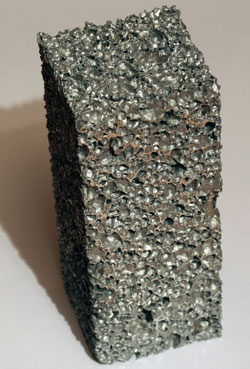
 Technical Information
Technical Information Power And Control Cables
Power And Control Cables Power Appendixes
Power Appendixes General Introduction to Cable
General Introduction to Cable History of Aluminum
History of Aluminum صفحه History of Aluminum
History of Aluminum
The name of this metal comes from the Latin “alumen” (in English “alum” = any double sulphate of aluminum and another metal), word with which the Romans described substances with astringent properties (constipation). Both in Greece and in Rome, alum was used for two basic functions; the first use had to do with the dyeing industry, where alum was used to fix the colors on textiles and the second use, already mentioned as an astringent in medicine.
Many centuries went by until this metal could be isolated. The first steps were taken by the Danish scientist Hans Christian Oersted, who obtained an impure form of aluminum in the early XIX century (it contained levels of lead). Years later, the German chemist Friedrich Wöhler was able to obtain pure aluminum, an achievement recorded in 1827.
In 1886, the American Charles Martin Hall and the Frenchman Héroult simultaneously discovered a simpler method to the costs of manufacturing this metal and its subsequent massive use. Two years later, Hall founded the company.
From the early days of its production until today, aluminum evolved from a costly metal to a versatile and widely-used product, which has countless properties, such as light weight, good conductivity, recyclable and very abundant in the ground.
 |
 |
 |
|
|
Advantages of Aluminum : * Light metal. * High degree of thermal and electrical conductivity. * Cheap metal and easily recyclable. * High resistance to corrosion. * Ductile and malleable material, which permits creating fine cable and thin sheets. * Permits alloys with other metals to improve its properties. * Abundant in nature. * Low melting point. |
 |





